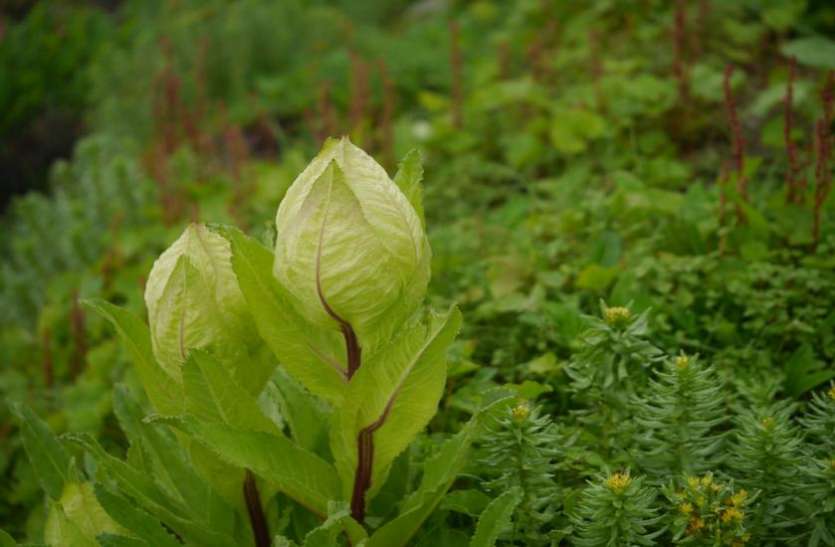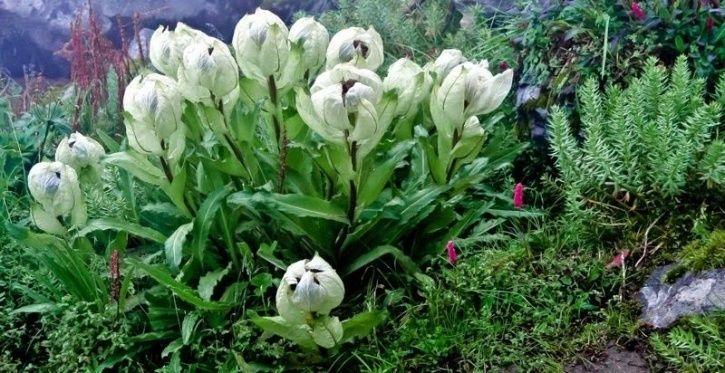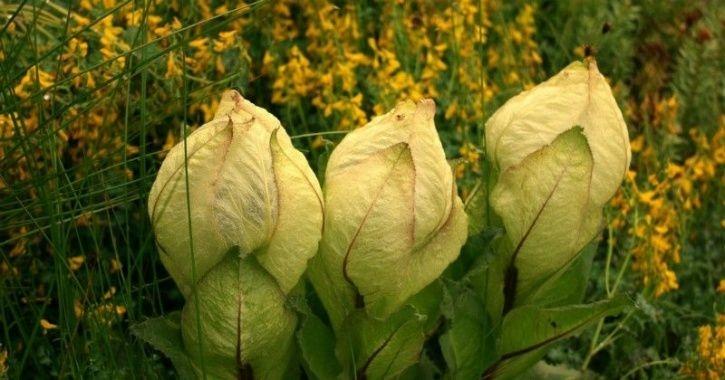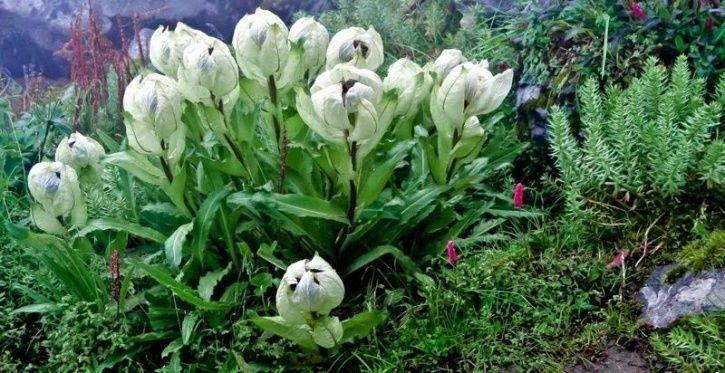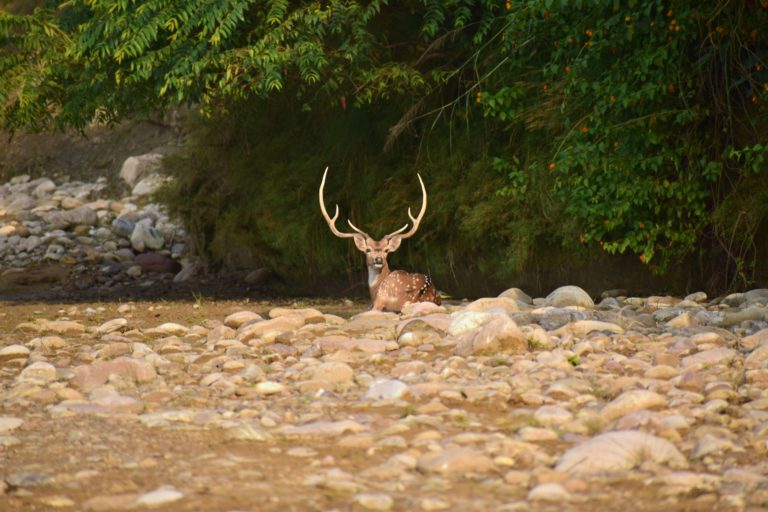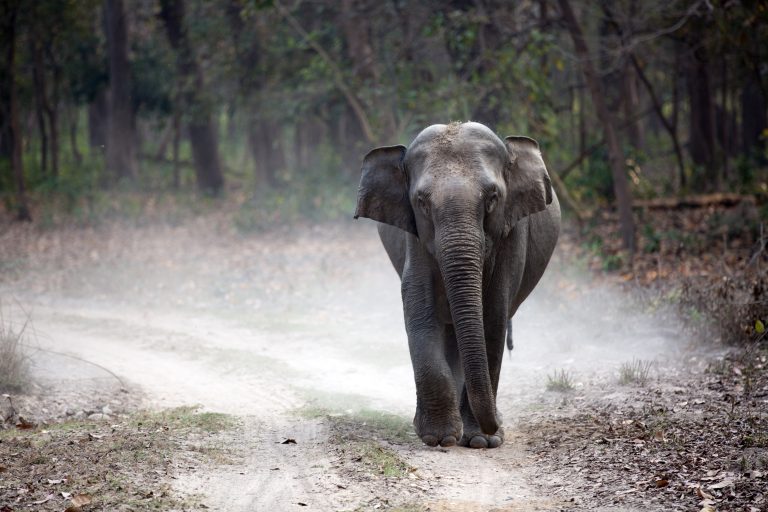Floral diversity of Uttarakhand is similar to any other Himalayan region in the country with an estimated 4,000 species of flowering plants having great economic medicinal, aromatic and artistic value. The endemic plant wealth of Uttarakhand is worth mentioning as it ultimately forms part of the National heritage. Uttarakhand Himalayas have about 116 species as indigenous group. Arenaria ferruginea; Chimonobambusa jaunsarensis, Gentian tetrasepala, G. saginoides, Meeboldia solenoids, Microschoenus duthiei, Trachycarpus takil, Poa rhadina, etc are some such species.
The floral diversity is further exhibited by the species that grow in the rain shadow areas of Uttaranchal. Such species develop adaptive characters to survive the wrath of adverse climate. Labium rhomboid, Thylacospermum caespitosum, Acantholimon Iycopodioides, Dracocephalum heterophyllum etc. are a few such examples.
The narrative of the plant wealth of Uttaranchal will not be complete unless a mentioned about the sacred plants commonly used in worship in “The Abode of Gods”. Besides, the earlier mentioned “Brahmakamal”, Zanthoxylum armatum (Timur), Prunus puddum (Panya), Skimmia laureola, Primula denticulata, and Artemisia nilagirica, Eagle marvelous etc. are offered to deities.
Brahma Kamal, Uttarakhand’s State Flower, Is Dying Of Rampant Exploitation & Climate Change
Brahma Kamal, the state flower of Uttarakhand, is revered in religious purposes and known for its impressive medicinal properties. However, over-harvesting and drastic climate change have led this exotic plant to the brink of extinction.
The plant, which grows above an altitude of 14,000 feet, is under imminent threat posed by the two factors. The species – its botanical name is Saussurea Obvallata – is found only in the Himalayas. The species is declining around the shrines of Yamunotri, Gangotri, Kedarnath and Badrinath.
Kedarnath Wildlife Sanctuary, Nanda Devi Biosphere Reserve and Askot Wildlife Sanctuary are the only areas where the species is protected.
The flower is extensively used in all the four shrines and other temples in higher altitudes as offerings. While rampant harvesting continues, nobody pays heed to its conservation and protection. If this continues, the species will soon disappear.
According to the Indian Academy of Sciences, Brahma Kamal clears recurrent urinary tract infections, and can be used as an excellent medicine for sexually transmitted diseases. It is also an excellent medicine in treating fever. Not just this, the flowers, rhizomes, and leaves are used for the treatment of bone ache, intestinal ailments, cough, and cold. The plant is considered a herb in Tibetan and Chinese medicine as well.
Towards extinction
“The plant is now endangered because locals are cutting it down for trade. The plant fetches a high price in the black market which trades in herbs. Local villagers are now climbing to higher altitudes in search of the flower, which was earlier beyond the reach”, says Rajnish Chauhan, who has been working as a guide in the Valley of Flowers for the last 15 years.
A recent survey conducted by scientists at Wildlife Institute of India (WII) found diminishing numbers of the plant die to reckless exploitation and climate change. According to the report, there has been a staggering 70% decline in the numbers of Brahma Kamal flower species to previous years. The survey was conducted in the Panch Kedar region of Uttarakhand and the report was published in the book Nature Guide.
Starting a species recovery programme is the need of the hour to save the plant from extinction. Experts suggest farming of Brahma Kamal at naturally-confined higher altitudes in Uttarakhand may help save the species.
Hindu epics call Brahma Kamal ‘The Life-Giving Lotus’.
The traces of popularity of the Brahma Kamal can be dated back to the time of Mahabharata and Ramayana. The herb also finds a mention in the story of creation of Lord Ganesha. On Parvati’s request, Lord Brahma created the Brahma Kamal. Using the flower, Lord Shiva placed the head of an elephant to the body of Ganesha. After attaching the head to the body, Ganesha was bathed with water sprinkled from a Brahma Kamal. Therefore, the lotus is given the status of a life-storing plant by gods.
In Ramayana, when the Sanjeevani herb was administered to Lakshmana, he was miraculously brought back to life. In celebration, Lord Brahma showered flowers from heaven, which fell to the Earth and took roots in the Valley of Flowers. Hence the name – Brahma Kamal.
Catching the flower in bloom is a rare sight. Brahma Kamal blooms in the late evening and stays for only a couple of hours. The flower remains intact throughout its life cycle. It blooms only one night in a year, exposing its star-like petals. The one who sees the blooming flower, is believed to be blessed by Lord Brahma, and will have prosperity and wealth.
…………………………………………
Source:

